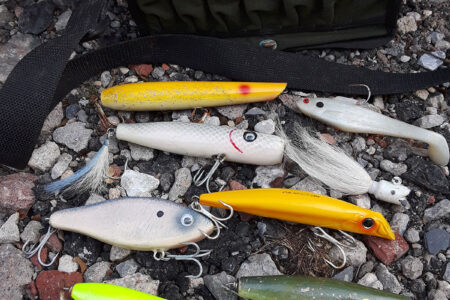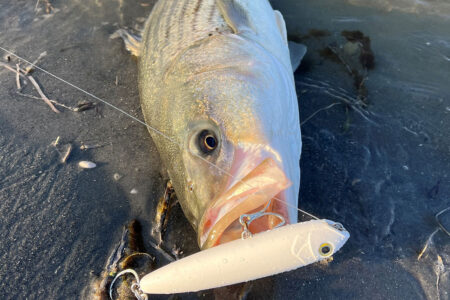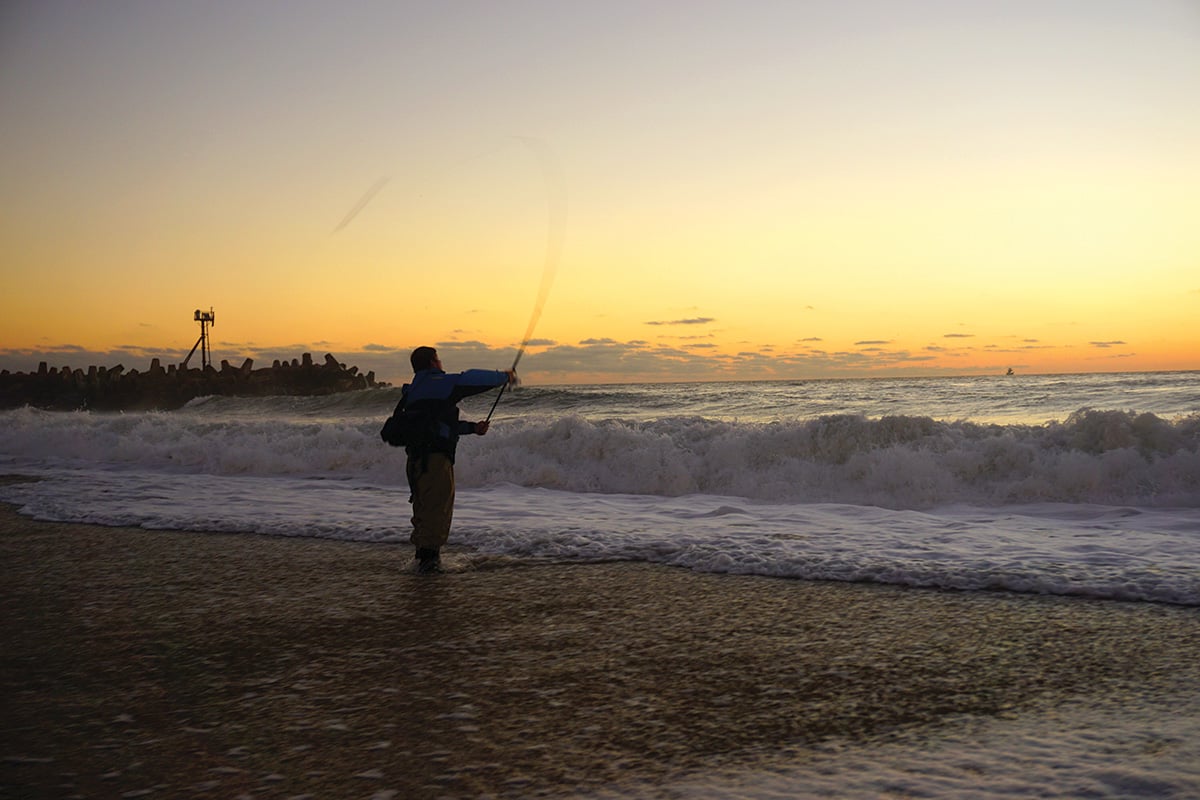
Another storm season is here, as North Jersey surfcasters work the shifting sands on old jetty country.
With a slam of the truck door I checked to be sure I had everything I needed before I walked away. Down a flight of wood stairs and across the beach I scampered, around one jetty and then another. It was in Sea Girt at a place we called “The Butts” or “The Army Camp.” As I walked I recalled the one day I was unsuccessfully working the tides, a free diver was just coming out of the water so I just had to ask, “Did you see any stripers down there?” His answer was shocking (especially since I didn’t even get a sniff). “Oh yeah hundreds of stripers, out and around the tips of these jetties,” he said.
That meant structure and structure meant life—as in ecosystem. Crabs, lobsters, baitfish, all the things bass like to munch on were there, which is why I loved that place so much!
I arrived at my jetty; it was more like a tabletop. She laid there so beautifully, flat as a pancake and at the perfect height. The water on the north side of the groin was deep and dark green, with the sun dropping behind me. I dug through my plug bag and pulled out what was at the time my favorite swimmer, the 5-1/2-inch Rebel G-Finish. I cast it out, half paying attention, and oh what that fish did to that swimmer I will never forget, I won’t forget how mangled the hooks were and how I was almost pulled into the water as I had my drag too tight. Man, the fish I caught in that area!
Sadly, the other thing I will never forget was the day I watched them needlessly bust down those jetties before they buried them with sand. Two years later the sand was long gone where those glorious jetties once stood. Now there are just piles of broken rubble – a complete and utter waste! It aggravates me to think about all the fish I got in that area and to see how it was destroyed.
Tails From the Deep
Art Nelson is a local New Jersey free diver who has been diving the jetty tips off Monmouth County for over 50 years. He has a lot of video footage of stripers and all types of fish below the waters in which we fish, which is stuff that I find extremely educational. Nelson once did a video called “Beach Rich-Fish Poor,” a short video of when they did beach restoration right there in Sea Girt in 1997; the video will leave any surfcaster disgusted and angry as the pumping of the sand killed everything in the vicinity. As he dove the North Jetty of nearby Manasquan Inlet after the replenishment, the area was devoid of life, nothing but a couple of dead starfish and dying bergalls. Even areas like Elberon 10 miles to the north were impacted by what happened due to the littoral flow, which carries sediment along our beaches in a south to north direction.
If you dig around a little you will find the documents published by the US Army Corp of Engineers (USACE) website under the Sandy Hook to Manasquan Inlet report. On one of the “Finding of No Significant Impact,” documents is mention of how the project will negatively affect the ecosystem; but I guess their “out” comes by saying, “no long term effects are expected.” That means it will be okay to bury everything in the surf zone (as in, who cares, it will come back).
The second problem of course is the taxpayer dollars that are being wasted; yes, beach replenishment and sand pumping will be going on as long as we live! I believe that a strong and stable ecosystem in the surf zone leads to consistency in our fishing; the constant disruption and killing destroys everything.
I distinctly remember going down to Sea Girt and that area to fish after they were done pumping, after all it was one of my favorite places to fish on the planet. All I found was lifelessness, it became a fish desert, and it really bothered me, I ended up not even going down there for at least two years, which seemed like a lifetime to not fish there.
Fast forward to today and you have another glaring instance of the absurd! The beaches of Deal, they are doing the same exact thing, but why? It doesn’t work. I remember a few years back when they replenished the beach at Long Branch right out in front of the Windmill. They made a huge point that shot out into the sea a hundred yards or more, by that fall all the sand was gone, and the beach was back to just about where it was before they started pumping sand. All that sand ended up at North Beach and the Rip at Sandy Hook. I remember parking at the North Beach lot and walking out to the water; instead of the normal 100 yard walk to the water, it was like 400 yards!
Any surfcaster worth his plug bag knows the dredge at Sandy Hook only too well. They are constantly dredging there. The sand pumping doesn’t work!
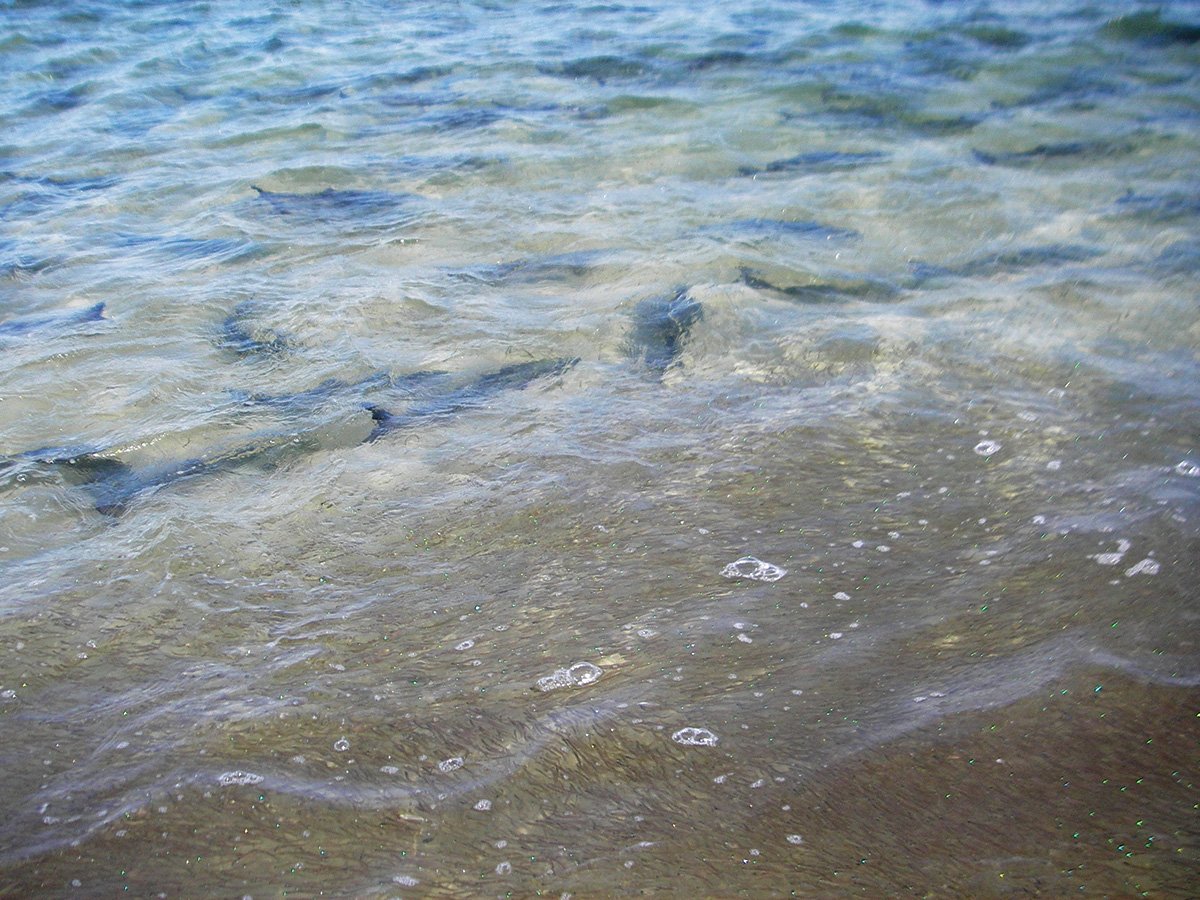
The Color of Money
The United States Army Corp of Engineers (USACE) runs all these beach replenishment projects, and logic will tell you that there has to be some underhanded stuff going on. Why you ask? That’s an easy one, because it doesn’t work. Of course, someone’s making out okay. The USACE signs contracts with private contractors to do the pumping, and usually it is a 50-year contract. They do the initial job and then they do it again, every five years, as necessary, as long as funding is available. That means we will have beach replenishment for the rest of our days, and our vital ecosystem will never recover to what it once was.
Bottom line, fishing, as we have known it in the past, is vastly different due to replenishment efforts in the wake of fall storms. And the thing that cracks me up is the USACE calls what they do “Beach Nourishment.” How does killing off clam beds and crabs and mussel beds and sea grass, all necessities of a well-balanced surf zone, nourish anything? Meanwhile I commonly see the dredges working non-stop in the inlets at Barnegat, Manasquan, Shark River; all that sand they are pumping out of the inlets is the same sand that they pumped on the beaches.
While beachfront homeowners are protected, it creates secondary problem that adds fuel to the fire; once these major projects are done with taxpayer funds going towards endless “nourishment” efforts, some towns like Deal for example want to close off access to the beaches, and they are subtlety doing things putting up “No Parking” signs. They make it difficult for surfcasters and surfers and beachcombers to have access.
If you do something and it doesn’t work, logically you would try something else, correct? Yet we rarely see any new ideas generated to fix the problem, longer jetties or angled jetties facing southeast for example that might help trap and collect sand as it moves down the beaches, some type of experimental projects to try something different rather than burying over the beaches with temporary sand.
And why do we have public hearings? The powers that be know that the different groups are going to oppose this waste of taxpayer dollars so they have these public hearings. I went to one in 2014 in Asbury Park, there were a couple hundred people, the Surfrider Foundation, the Friends of Deal Lake and representatives from the big surfcasting clubs including the Jersey Shore Surfcasters, Asbury Park Fishing Club, Shark River Surf Anglers and more were there so the voices could be heard. As I stood listening to the various speakers, in my heart I knew nothing would happen; rarely anything ever does.
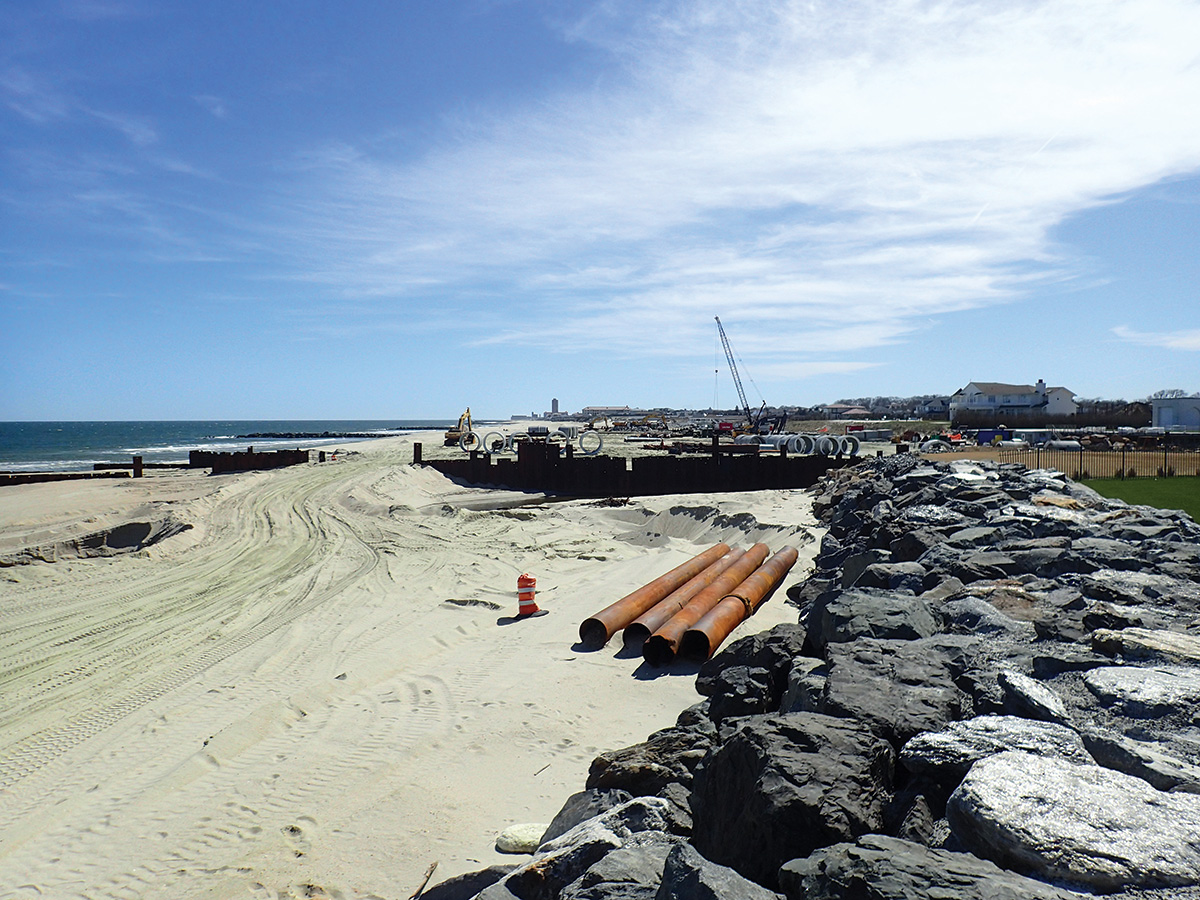
Working Northern Beaches
Go down to the beaches of Deal today and you’ll see beautiful, sandy stretches – beaches that homeowners hope to protect for themselves by banning public parking wherever and however possible. Regrettably what you won’t see there in Deal any longer is the magnificent ecosystem that was buried over.
I think the long-term effects of beach replenishment, to the Jersey Shore, have been negative to our overall fishing, certainly in terms of surfcasting. I am not sticking my neck out by saying that, most will agree with me. They do it somewhere every year now and I don’t think the constant flow of sediment gives the surf zone much chance for recovery. As such, most of the best action now is relegated to migration fishing only in this stretch; the migration is when the fish have to pass us to get either south or north, and the days of consistent catches from April through Christmas with resident fish are mostly over without that old structure.
But if there is a good thing about beach replenishment, it creates a ton of of soft structure a.k.a. sandbars. The movement and the shoaling of sand in any random areas can make for some great opportunities.
Find the bars and sloughs, and you will find some predators. Bass just love sand bars and soft structure, but you’ll need to continually revisit old grounds as you may find that the sand bar you fished two weeks ago is gone next time you show up at your spot.
But you know what, if you want success you will have to work and hunt and scout good water. This will be your key to success in our ever shifting sands of time; and thanks to the “nourishment” efforts, we have a lot of “shifting sands” to work over now this season!


